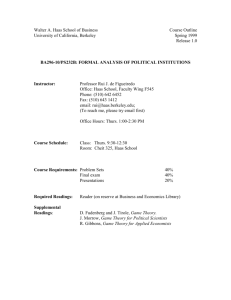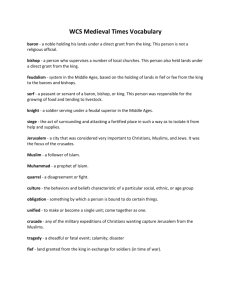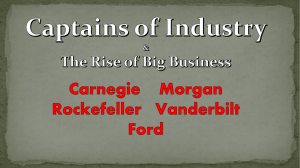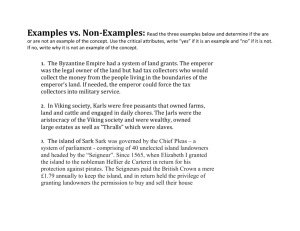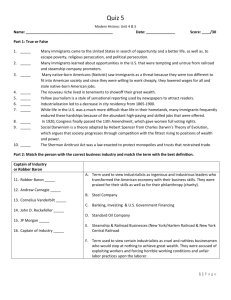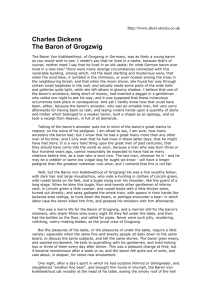Walter A - Faculty Directory | Berkeley-Haas
advertisement
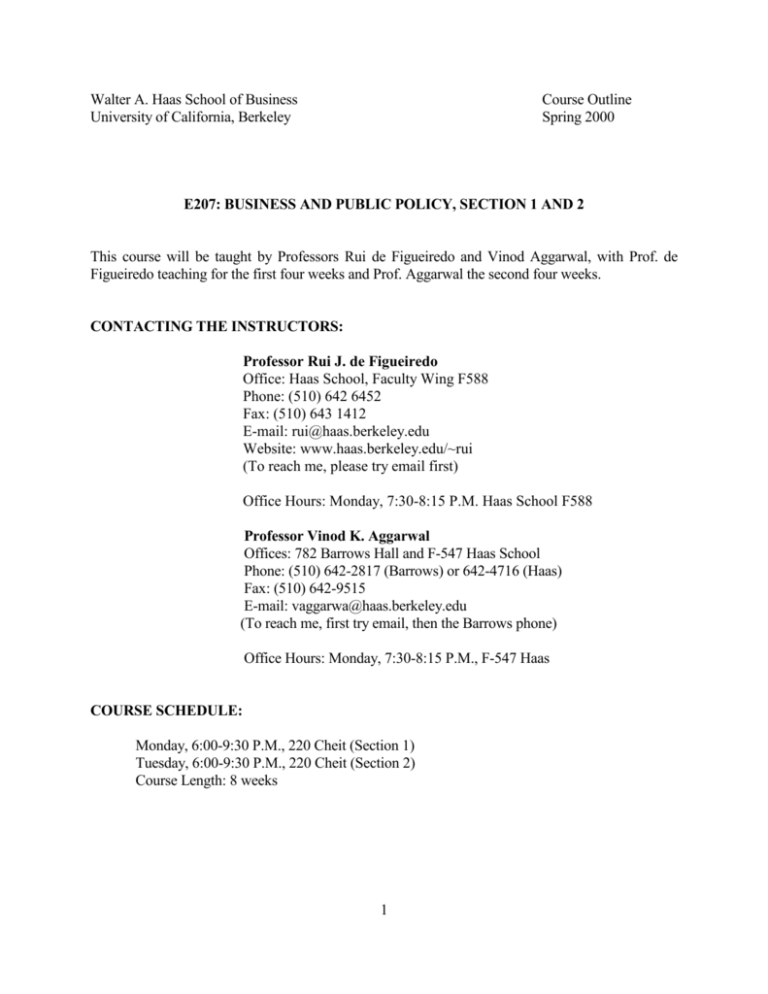
Walter A. Haas School of Business University of California, Berkeley Course Outline Spring 2000 E207: BUSINESS AND PUBLIC POLICY, SECTION 1 AND 2 This course will be taught by Professors Rui de Figueiredo and Vinod Aggarwal, with Prof. de Figueiredo teaching for the first four weeks and Prof. Aggarwal the second four weeks. CONTACTING THE INSTRUCTORS: Professor Rui J. de Figueiredo Office: Haas School, Faculty Wing F588 Phone: (510) 642 6452 Fax: (510) 643 1412 E-mail: rui@haas.berkeley.edu Website: www.haas.berkeley.edu/~rui (To reach me, please try email first) Office Hours: Monday, 7:30-8:15 P.M. Haas School F588 Professor Vinod K. Aggarwal Offices: 782 Barrows Hall and F-547 Haas School Phone: (510) 642-2817 (Barrows) or 642-4716 (Haas) Fax: (510) 642-9515 E-mail: vaggarwa@haas.berkeley.edu (To reach me, first try email, then the Barrows phone) Office Hours: Monday, 7:30-8:15 P.M., F-547 Haas COURSE SCHEDULE: Monday, 6:00-9:30 P.M., 220 Cheit (Section 1) Tuesday, 6:00-9:30 P.M., 220 Cheit (Section 2) Course Length: 8 weeks 1 COURSE DESCRIPTION: This course introduces students to the political and social (non-market) environment of business in the United States, Europe, and Japan. Topics include domestic political institutions and policymaking, corporate political strategies, government regulation and deregulation, industrial policy, trade policy making, and international institutions. READINGS: Class reading packet and David Baron, Business and Its Environment, 3rd Edition COURSE REQUIREMENTS AND GRADING: Grading 25%: Class attendance and participation 25%: Group write up and presentation of a case 50: 10 page paper Class attendance and participation: This part of the grade will be awarded for regular class attendance and participation in classroom discussions. Please contact the instructor if you know that you will be unable to attend a specific class. Oral participation is a key element in developing skill as an advocate for your position. While the quality of participation is more important than sheer quantity, a minimum level of participation is clearly essential. Group presentation of a case: Working in groups of five or six, students will write-up and orally present a case (listed below as Group Case #). You should specify the role you are playing, the context of the case, the issue(s) that needs to be addressed, and your recommendation based on analysis of options and supporting evidence. The written presentation is due at the beginning of class, and should be no more than 10 pages long. The oral presentations should be about 15-20 minutes in length with students prepared to subsequently interact with and respond to questions from both their classmates and instructor. Grading will be based on both the written and oral presentation (50% each) and will be on a group basis. Paper: Due on May 8, 2000 for Section 1 and May 9, 2000 for Section 2. Overview: Prepare an executive brief of no more than 10 double-spaced pages on an issue relevant to the environment of business. You should assume the role of a business manager, trade association, or consultant to industry. The paper should state, develop, and explain your position on a current public policy issue facing your business or industry. 2 Choice of Topic: Choose a public policy issue that is significant but specific. In developing ideas for a topic, you may wish to read trade publications or more general magazines such as the Economist. Other ideas may come from issues discussed in the national press. You should feel free to consult with the professor or others on your topic. Elements of the Paper: 1. Issue. Discuss the issue or issues to be addressed and why this is a potential problem or opportunity for the firm or trade association that you represent. 2. Context. Identify the origin of the problem and where it currently stands on the political agenda. 3. Political Forum. Discuss the political forum or forums in which the issue or issues are likely to be addressed. 4. Range of Outcomes. What outcomes might be likely and how would they impact your firm or association's interests and objectives? 5. Bargaining Context and Spreadsheet. Identify your firm or association's potential allies or adversaries and construct a distributive politics spreadsheet to analyze likely outcomes. 6. Strategy and Arguments. Suggest an appropriate market and/or nonmarket strategy to deal with the issue(s). Discuss the arguments that might be used to support or challenge your firm or association's position. COURSE OUTLINE AND READING ASSIGNMENTS: PART I: NON-MARKET ISSUES, STRATEGIES, AND U.S. INSTITUTIONS CLASS 1: March 20/21: Introduction to Non-Market Strategy and Integration with Market Strategies David Baron, “Integrating Market and Non-Market Strategies,” CMR, Winter 1995. Optional: Baron, “The Market and Non-Market Environments” and “Integrated Strategies,” Chapters 1 and 2. CLASS 2: March 20/21: Political Institutions in the United States Case: “Business’s Push for Daylight Savings,” Fortune, Nov. 14, 1984 Optional: Baron, “Political Theory and Government Institutions,” Chapter 5. 3 CLASS 3: March 27/28: Political Institutions in the United States Case: “Business’s Push for Daylight Savings,” Fortune, Nov. 14, 1984 (continued) Baron, “Political Analysis for Business,” Chapter 6. CLASS 4: March 27/28: Coalition Formation and Interests Case: Taxing the Internet (various articles) Baron, “Implementing Political Strategies,” Chapter 8. PART II: REGULATION CLASS 5: April 3/4: Economic Regulation GC#1: “Echelon and the Home Automation Standard,” Baron, pp. 215-219. Optional: Baron, “Regulation, Law, Economics and Politics,” Baron, Chapter 10. CLASS 6: April 3/4: Antitrust Regulation Baron, “Antitrust, Economics, Law, Policy and Markets,” Chapter 9. GC#2: “The Microsoft Antitrust Case,” Baron, pp. 298-306. PART III: PRIVATE NON-MARKET ACTION CLASS 7: April 10/11: Self-Regulation GC#3: “Responsible Care,” HBS Case 9-391-135. CLASS 8: April 10/11: Activism, the Media and the Politics of Risk Baron, “The News Media and Non-Market Issues,” Chapter 3. GC#4: “Alar,” Baron, pp. 85-86. Case: “Veggie Libel Wars,” Baron, pp. 86-88. 4 PART IV: NONMARKET AND MARKET STRATEGIES IN EUROPE AND ASIA CLASS 9: April 17/18: The European Union: Business Lobbying and Political Institutions Baron, “The European Union,” Chapter 14. Case: “The EU Carbon Tax” CLASS 10: April 17/18: The European Union: Business Lobbying and Political Institutions Case: “Benetton, Advertising Protests, and Franchising” Case: “Toys R’ Us in Germany” Case: “Toys R’ Us in Sweden” CLASS 11: April 24/25: Japan: Business Lobbying and Political Institutions Baron, “The Political Economy of Japan,” Chapter 13. GC#5: “The Breakup of NTT” CLASS 12: April 24/25: Japan: Business Lobbying and Political Institutions GC#6: “Toys R’ Us in Japan” CLASS 13: May 1/2: China: Nonmarket Environment and Strategies Baron, “China: History, Culture, and Political Economy,” Chapter 15. Case: “Wugang and the Reform of State-Owned Enterprises” GC#7: “Direct Marketing in China” PART V: INTERNATIONAL TRADE AND NON-MARKET ISSUES CLASS 14: May 1/2: International Trade, Institutions, and Negotiations Baron, “The Political Economy of International Trade Policy,” Chapter 16 GC#8: “Cemex and Antidumping” 5 CLASS 15: May 8/9: U.S. Trade Policy Aggarwal, Vinod K., “Governance in International Trade: Changing Patterns of Sectoralism, Regionalism, and Globalism,” P.J. Simmons and Chantal de Jonge Oudraat, eds., Managing a Globalizing World: Lessons Learned Across Sectors (Washington, D.C.: The Carnegie Endowment for International Peace), forthcoming. GC#9: “The Kodak-Fujifilm Trade Dispute” CLASS 16: May 8/9: Ethics and International Business Baron, “Ethical Issues in International Business,” Chapter 22. GC#10: “Levi Strauss & Co. in China” PAPER DUE: May 8, 2000 (for section 1), May 9, 2000 (for section 2) 6
